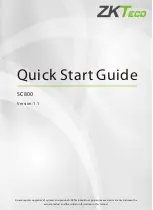
To start the
pump
3. Sorption pump roughing is highly recommended as contaminants
do not backstream into the ion pump.
If
a mechanical pump is
used, it must be well trapped or oil back-streaming from the
mechanical pump can contaminate the ion pump.
4.
If
a pump is dirty or has been at atmospheric pressure, it may be
necessary to bakeout the ion pump into the roughing pump before
it can be started. This is done by heating the ion pump to a
temperature of 150-250
°
C for a period of several hours.
1. Turn on power to the DIGITEL and press
HV ENABLE.
After displaying
P-E
for two seconds,
1
the display shows OPEr for
one second. The
HV ENABLE
switch stops flashing and lights
continuously when high voltage comes on.
2. When voltage starts to rise above 700V, the pump starts. The
roughing pump should be valved off at this point.
If
the pump
starts to stall when the roughing pump is valved off (as indicated
by a decrease in voltage), the roughing pump should be valved
back into the system. After voltage has increased above 3000V,
the display may be switched to current or pressure to get a better
idea of the ion pump pressure (when starting the pump, the voltage
display mode is more sensitive to pressure changes at the high
pressures).
3.2.2 Display Operation
Voltage mode
Current mode
Pressure mode
When the DIGITEL is turned on, a Vlights to indicate voltage display
mode. To display voltage, press
VOLTS.
The display shows output
voltage of 0000 to 9900 in steps of 100 volts.
To display current, press
CURR.
Current is displayed in scientific
notation. The xlO symbol lights to indicate scientific notation, and an
I
lights to indicate the current display mode.
To display pressure, press the
PRESS
key. The display briefly shows
torr or pascl to indicate the display unit that has been selected.
1
If this does not happen, see the Troubleshooting Guides to find out the problem.
3-4
Operation
















































